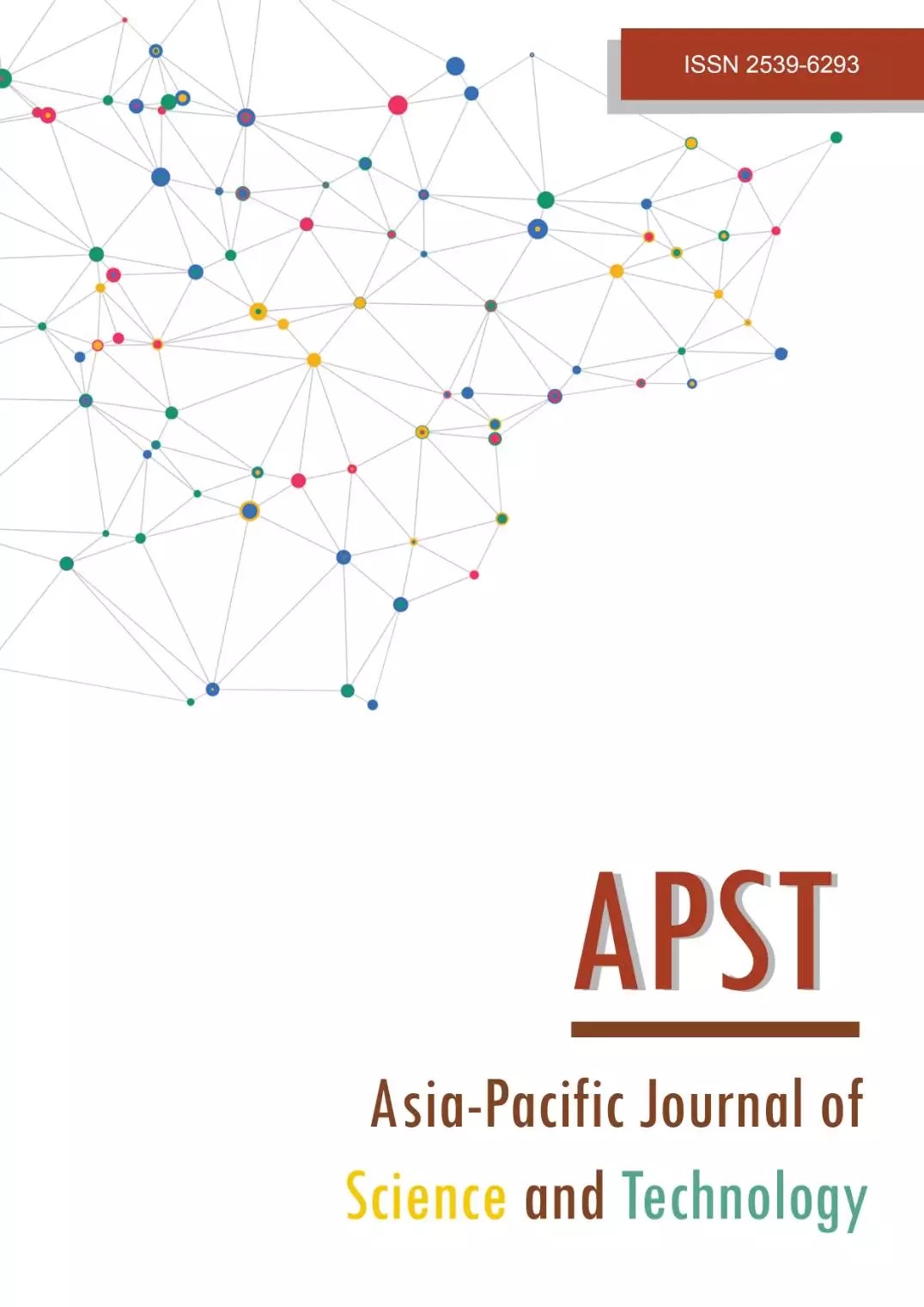Nut Sangjumrus
Division of Occupational Medicine, Department of Community Medicine, Faculty of Medicine, Khon Kaen University, Khon Kaen, Thailand
Naesinee Chaiear
Division of Occupational Medicine, Department of Community Medicine, Faculty of Medicine, Khon Kaen University, Khon Kaen, Thailand
Kanda Saikaew
Department of Computer Engineering, Faculty of Engineering, Khon Kaen University, Khon Kaen, Thailand
Apichart So-ngern
Division of Sleep Medicine, Srinagarind Hospital, Faculty of Medicine, Khon Kaen University, Khon Kaen, Thailand
Peter S. Burge
Occupational Lung Disease Unit, Birmingham Heartlands Hospital, Birmingham, United Kingdom
DOI: https://doi.org/10.14456/apst.2021.43
Keywords: Work-related asthma Occupational asthma Allergens Immunologic sensitization , Medical informatics applications
Abstract
Occupational asthma (OA) is one of the most common occupational lung diseases. There are currently about 300 documented asthmagens. Patients have a chance to be cured if the OA is handled correctly. Diagnostic delay is often due to the attending not taking the occupational history. The aim of our study was to develop a web application that would deliver fast and accurate information. Methodology: The three phases of web application development were included. Sourcing input data from a systematic review of 1,403 studies found when searching for review and systematic review and full text and inclusion criteria. A total of 276 eligible studies were selected, and after reviewing abstract, 25 were fully reviewed and summarized into 2 groups-14 high molecular weight agents and 14 low molecular weight agents. The industrial code was then reviewed, and prototypes developed. Evaluation of prototypes for System Usability Scale (SUS) by experts was performed. The expert suggestions were reviewed and revised to create a second prototype. Trialing web application for use by primary care physicians. The final web application was evaluated by primary care physicians was implemented. The median of SUS was 75, which is greater than the average. In future, we seek to develop tools for analyzing the probability of diagnosing OA, which would help making diagnosis more convenient. The earlier diagnosis can be achieved, the better the prognosis.
How to Cite
Sangjumrus, N., Chaiear, N., Saikaew, K., So-ngern, A., & Burge, P. S. (2021). Developing a web application to provide information on common work-related asthma causative agents. Asia-Pacific Journal of Science and Technology, 26(04), APST–26. https://doi.org/10.14456/apst.2021.43
References
[1] Malo JL, Chan-Yeung M, Bernstein DI. Asthma in the workplace. 4th ed. Boca Raton: CRC Press; 2013.
[2] Tarlo SM, Boulet LP, Cartier A, Cockcroft D, Côtè J, Hargreave FE, et al. Canadian thoracic society guidelines for occupational asthma. Can Respir J. 1998;5(4):289-300.
[3] Cartier A, Grammer L, Malo JL, Lagier F, Ghezzo H, Harris K, et al. Specific serum antibodies against isocyanates: association with occupational asthma. J Allergy Clin Immunol. 1989;84(4 Pt 1):507-514.
[4] Fishwick D, Bradshaw L, Davies J, Henson M, Stenton C, Burge S, et al. Are we failing workers with symptoms suggestive of occupational asthma. Prim Care Respir J. 2007;16(5):304-310.
[5] Poonai N, van Diepen S, Bharatha A, Manduch M, Deklaj T, Tarlo SM. Barriers to diagnosis of occupational asthma in Ontario. Can J Public Health. 2005;96(3):230-233.
[6] Manotham M, Chaiear N, Yimtae K, Thammaroj T. Completeness of occupational history taking record for out-patients with potential work-related disorders at a university hospital in northeast of Thailand. Srinagarind Med J. 2015;33(2):169-175.
[7] Fishwick D, Barber CM, Bradshaw LM, Harris-Roberts J, Francis M, Naylor S, et al. Standards of care for occupational asthma. Thorax. 2008;63(3):240-250.
[8] World Health Organization. mHealth: new horizons for health through mobile technologies. Geneva: WHO; 2011.
[9] Malo JL, Chan-Yeung M. Asthma in the workplace: a Canadian contribution and perspective. Can Respir J. 2007;14(7):407-413.
[10] Taylor AN, Cullinan P, Burge PS, Nicholson P, Boyle C. BOHRF guidelines for occupational asthma [editorial]. Thorax. 2005;60(5):364-366.
[11] Jongkumchok W, Chaiear N, Boonsawat W, Chaisuksant S. Occupations and causative agents among work-related asthma patients in easy asthma clinic, Srinagarind Hospital, Khon Kaen, Thailand. Am J Public Health Res. 2018;6(2):111-116.
[12] Alturki R, Gay V. Usability testing of fitness mobile application : methodology and quantitative. J Comput Sci Inf Tech. 2017:97-114.
[13] Glenn W. Suter II. Review papers are important and worth writing. Environ Toxicol Chem. 2013;32(9): 1929-1930.
[14] Maneechai W, Prabhabpongsa P, Mitrthammasri W, Sangarsop-viriya A. Occupational asthma. RTA Med J. 2016;(4):185-188.
[15] Health and Safety Executive (HSE). Work-related asthma statistics in Great Britain, 2020. London: HSE; 2020.
[16] Faulkner L. Beyond the five-user assumption: benefits of increased sample sizes in usability testing. Behav Res Methods Instrum Comput. 2003;35(3):379-383.

Published:
License
This work is licensed under a Creative Commons Attribution-NonCommercial-NoDerivatives 4.0 International License.
